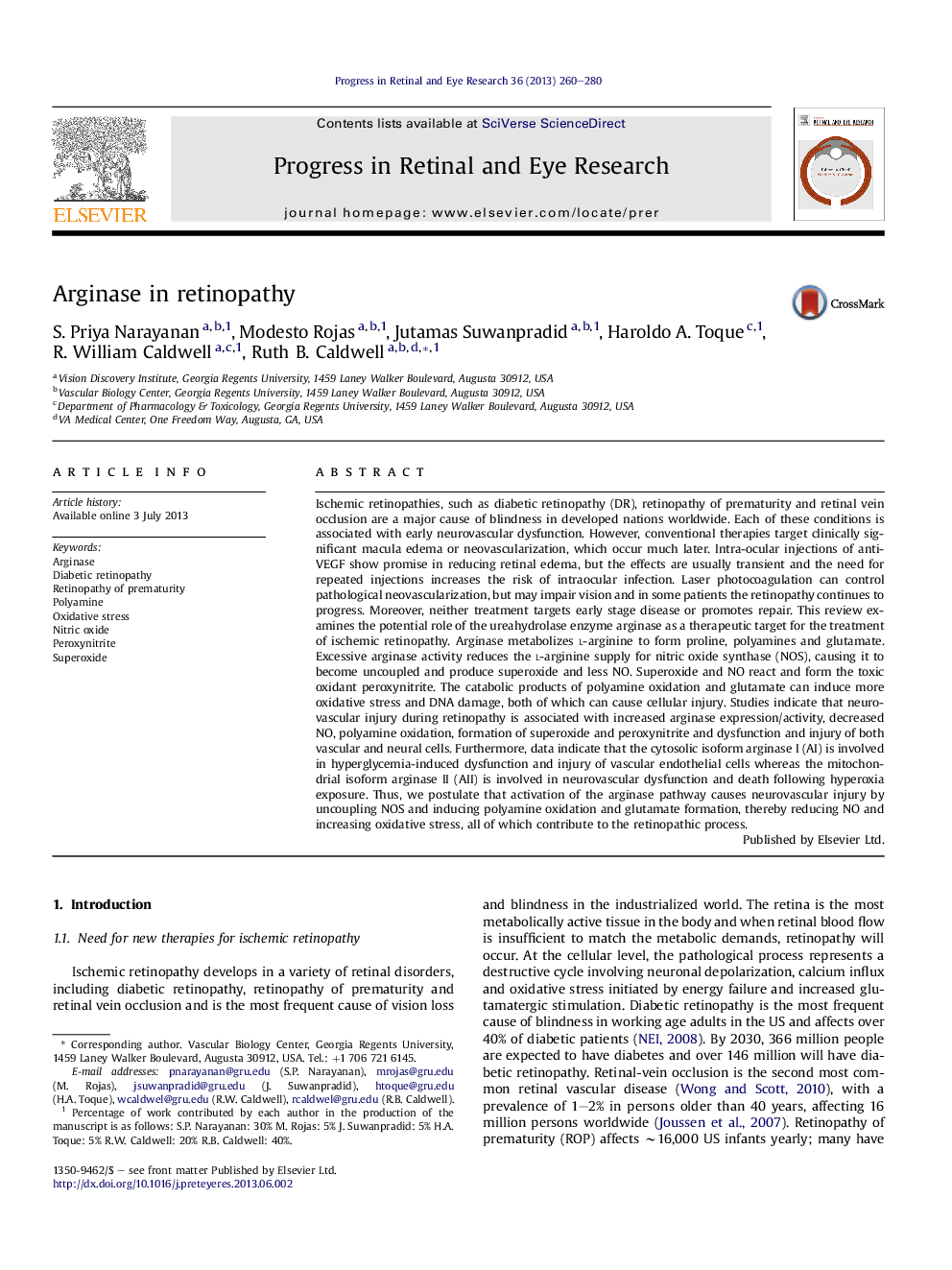| کد مقاله | کد نشریه | سال انتشار | مقاله انگلیسی | نسخه تمام متن |
|---|---|---|---|---|
| 6202768 | 1602830 | 2013 | 21 صفحه PDF | دانلود رایگان |
- New therapies are needed for ischemic retinopathies.
- Arginase signaling is associated with neurovascular injury in the ischemic retina.
- Arginase blockade limits diabetes-induced retinal vascular dysfunction/injury.
- Arginase II deletion limits neuro-glial injury during oxygen-induced retinopathy.
- Strategies for limiting arginase activity offer new therapy for ischemic retinopathy.
Ischemic retinopathies, such as diabetic retinopathy (DR), retinopathy of prematurity and retinal vein occlusion are a major cause of blindness in developed nations worldwide. Each of these conditions is associated with early neurovascular dysfunction. However, conventional therapies target clinically significant macula edema or neovascularization, which occur much later. Intra-ocular injections of anti-VEGF show promise in reducing retinal edema, but the effects are usually transient and the need for repeated injections increases the risk of intraocular infection. Laser photocoagulation can control pathological neovascularization, but may impair vision and in some patients the retinopathy continues to progress. Moreover, neither treatment targets early stage disease or promotes repair. This review examines the potential role of the ureahydrolase enzyme arginase as a therapeutic target for the treatment of ischemic retinopathy. Arginase metabolizes l-arginine to form proline, polyamines and glutamate. Excessive arginase activity reduces the l-arginine supply for nitric oxide synthase (NOS), causing it to become uncoupled and produce superoxide and less NO. Superoxide and NO react and form the toxic oxidant peroxynitrite. The catabolic products of polyamine oxidation and glutamate can induce more oxidative stress and DNA damage, both of which can cause cellular injury. Studies indicate that neurovascular injury during retinopathy is associated with increased arginase expression/activity, decreased NO, polyamine oxidation, formation of superoxide and peroxynitrite and dysfunction and injury of both vascular and neural cells. Furthermore, data indicate that the cytosolic isoform arginase I (AI) is involved in hyperglycemia-induced dysfunction and injury of vascular endothelial cells whereas the mitochondrial isoform arginase II (AII) is involved in neurovascular dysfunction and death following hyperoxia exposure. Thus, we postulate that activation of the arginase pathway causes neurovascular injury by uncoupling NOS and inducing polyamine oxidation and glutamate formation, thereby reducing NO and increasing oxidative stress, all of which contribute to the retinopathic process.
Journal: Progress in Retinal and Eye Research - Volume 36, September 2013, Pages 260-280
